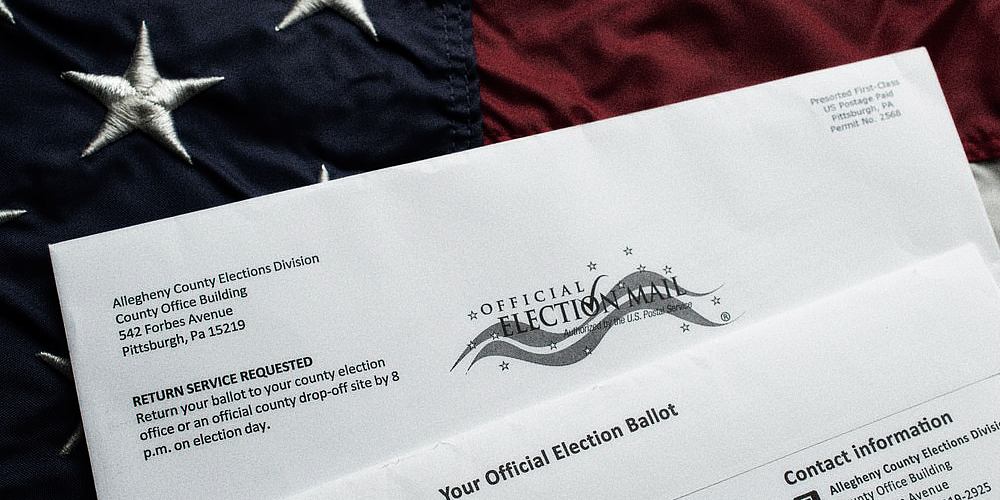(The Economic Collapse Blog)—November 5th is still about a week away, but more than 47 million Americans have already voted. Early voting has become quite prominent in states all over the country, and the numbers that we are getting so far appear to be quite promising for the Trump campaign. There have been rumors that the Harris campaign is starting to panic, and I think that they have good reason to panic. Unless something dramatic happens over the next week, it is going to be very difficult for Harris to find a path to 270 electoral votes. Today, I want to take a closer look at the all-important swing state of Pennsylvania. Without Pennsylvania, there is probably no possible way that Harris can win, and right now the numbers we are getting from the state do not look promising for her.
In 2020, Joe Biden got 3,458,229 votes in Pennsylvania and Donald Trump got 3,377,674.
So Biden won the state by a margin of less than 100,000 votes. Unlike other states, in-person early voting is not happening in Pennsylvania. All of the early votes that are coming in are mail ballots, and Democrats tend to dominate mail voting all over the nation.
But the numbers that we are getting from Pennsylvania in 2024 look much different from the numbers that we got from Pennsylvania in 2020.
In 2020, a total of 3,087,524 mail ballots were requested, but in 2024 only 2,090,960 mail ballots have been requested and the deadline for requesting one is almost here. So there will be close to a million fewer mail ballots that could potentially be sent in this time around.
Needless to say, that is huge. In addition, the gap between Democrats and Republicans when it comes to mail voting in Pennsylvania has narrowed considerably this election cycle. In 2020, Democrats returned 1,702,484 mail ballots and Republicans returned 623,404 mail ballots. So Democrats had built up a lead of more than a million votes in the state before Election Day even arrived.
That absolutely gigantic lead proved to be too much, and Trump ultimately lost by a narrow margin. But things are very different here in 2024.
According to the latest numbers, Democrats have returned 823,421 mail ballots and Republicans have returned 443,935 mail ballots.
Instead of the million ballot lead that they had last time, Democrats have only built up a gap of less than 400,000 ballots so far.
Everyone is projecting that Trump will run far stronger than Harris on the day of the election in Pennsylvania, and if Harris ultimately loses Pennsylvania it is hard to see how she could pull together enough electoral votes to win the election.
But there is still about a week to go until November 5th, and so much could still happen. Hopefully voting will go very smoothly all over the country, but already we are getting some very troubling reports.
For example, on Monday fires were reported at ballot boxes in Oregon and Washington…
Federal authorities are investigating fires at two ballot boxes reported Monday morning in the Portland, Oregon, area.
Police responded to a call about a fire in Portland about 3:30 a.m. Monday, the Portland Police Bureau said in a statement. An “incendiary device” was placed inside the box and security personnel extinguished the fire, officials said.
Federal officials are investigating the incident in Portland and a second fire in nearby Vancouver, Washington, with the help of state and local law enforcement agencies, said Steve Bernd, a spokesperson for the FBI’s Seattle office.
This should make all of us very angry.
When someone tries to disrupt the voting process, they are committing a crime against all of us.
At this point, police are telling us that the two incidents are connected and they have identified a “suspect vehicle”…
Police say two fires set at ballot boxes in separate states are connected with just eight days until Election Day in what appears to be a serious case of attempted election interference.
In Portland, Oregon, police have identified a ‘suspect vehicle’ after a ballot box in the southeast part of the city was lit on fire early Monday morning and hundreds of votes were destroyed.
Hopefully they will catch whoever did this.
In Colorado, “nearly 30,000 previously cast votes” are getting a second look after a number of fraudulent ballots were caught by authorities…
Mesa County, Colorado, is reexamining nearly 30,000 previously cast votes after the discovery of a dozen fraudulent ballots, with some voters reporting that ballots were intercepted and submitted without their consent.
Colorado Secretary of State Jena Griswold announced Thursday during a press conference that over a dozen mailed ballots were intercepted and cast fraudulently before the actual voters even had a chance to receive them.
This alarming situation has sparked a full-blown criminal investigation, and three of those fraudulent votes were counted before the tampering was caught.
Colorado could be one of the big surprises on November 5th.
It had been considered to be a lock for the Democrats, but so far Democrats have only built up a lead of about 3 percent in votes cast during the early voting period.
Once we get to the night of the election, most of the nation will be breathlessly awaiting the results. And when it is all over, one side is going to be experiencing very deep emotional pain.
For a long time I have been warning that we will see extreme chaos in the aftermath of this election, and a newly released poll has discovered that most Americans believe that civil unrest is likely…
Most Americans expect violence following Election Day but remain confident their vote will be counted accurately and are willing to accept the results of the presidential race, a new Scripps News/Ipsos poll found.
The survey of 1,000 Americans finds bipartisan concerns over unrest after Nov. 5. Overall, 62% of respondents – including 70% of Democrats and 59% of Republicans – say violence related to the election is “somewhat“ or “very likely.”
And among respondents in the key battleground state of Wisconsin, which was also measured as part of the survey, concerns over violence are higher, at 72%.
My hope is that once a winner is declared, the mainstream media, key celebrities and our top political leaders will all urge Americans to be calm.
But I wouldn’t count on that happening.
Instead, I think that it is far more likely that about half the country will throw a historic temper tantrum, and that won’t be good for any of us.
Michael’s new book entitled “Why” is available in paperback and for the Kindle on Amazon.com, and you can subscribe to his Substack newsletter at michaeltsnyder.substack.com.


